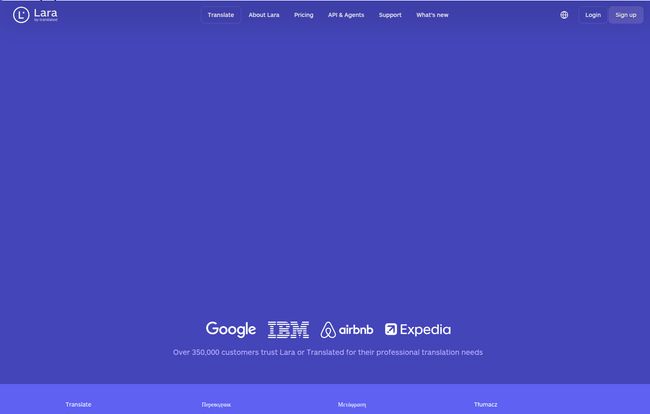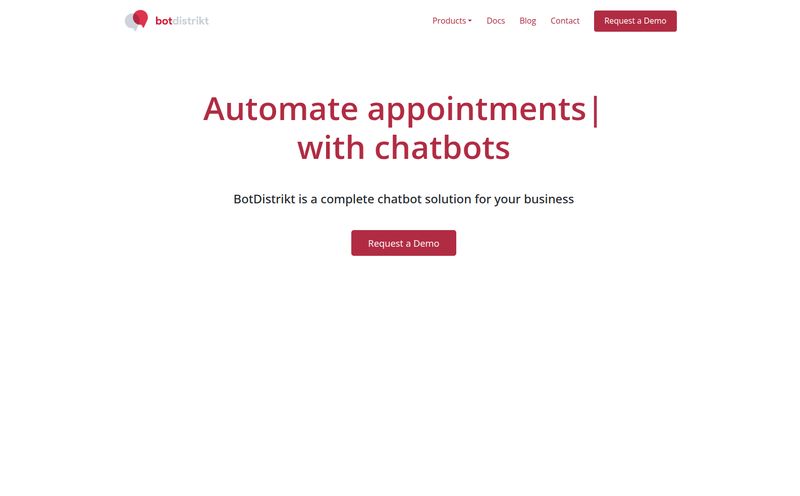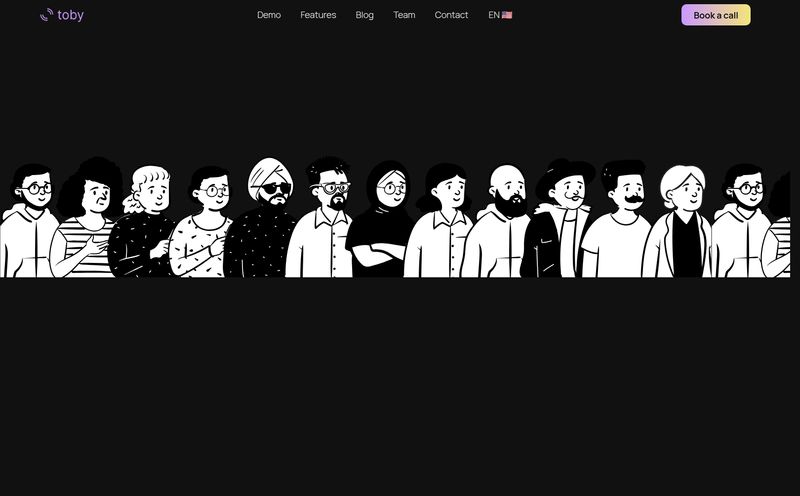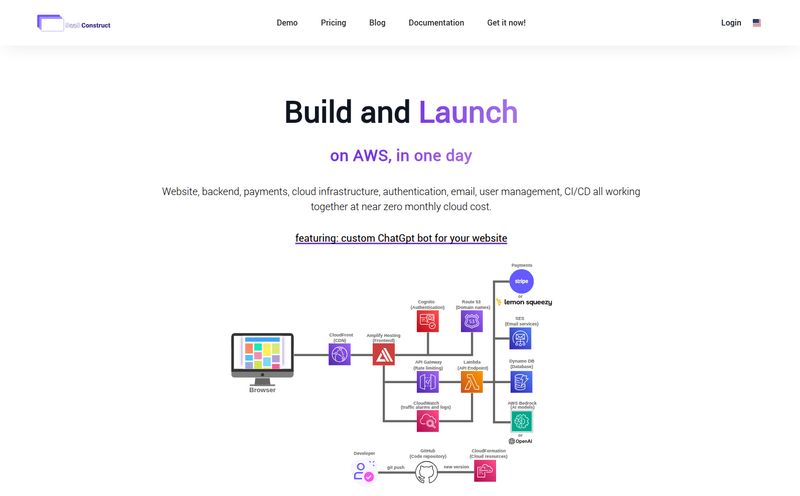For years, the world of online translation has been a two-horse race. You've got Google Translate, the reliable old pickup truck that gets the job done but isn't exactly... elegant. Then you have DeepL, the sleek German sedan that offers more nuance but can feel a bit restrictive if you're not paying up. I've used both extensively for everything from translating client emails to trying to decipher technical SEO articles in Korean. They work. Mostly.
But I've always had this nagging feeling. A feeling that there should be something more. Something that blends the accessibility of Google with the finesse of DeepL, and then adds its own special sauce. So, when I stumbled upon a newer player called Lara Translate, my curiosity was definitely piqued. The first thing I saw? A list of their customers includes Google, IBM, Airbnb, and Expedia. Wait, what? Google uses a competitor's translation service? Okay, now you have my full attention.
What Exactly is Lara Translate? (And Why Should You Care?)
At first glance, Lara Translate looks like another simple copy-paste translator. But that's just the tip of the iceberg. This isn't just a text box; it's a full-fledged translation platform designed for professionals. It handles your quick text snippets, sure, but its real power lies in its ability to translate entire documents—we're talking PDFs, Word docs, you name it—while preserving the formatting. That right there is a huge time-saver for anyone in marketing or business.
But the feature that really caught my eye was the different translation 'styles'. You can choose between:
- Faithful: A direct, literal translation. Good for technical documents or legal text where precision is everything.
- Fluid: A more natural-sounding translation that balances accuracy with readability. This is probably your go-to for emails and general communication.
- Creative: This one is interesting. It takes more liberties to make the text sound natural and idiomatic in the target language. I can already see the potential for translating marketing copy and social media posts where tone is more important than a word-for-word match.
It’s like ordering coffee. 'Faithful' is your straight black espresso, 'Fluid' is a smooth latte, and 'Creative' is that fancy seasonal concoction with oat milk and a caramel drizzle. Sometimes you need one, sometimes another.

Visit Lara Translate
My First Impressions: Putting Lara to the Test
I decided to throw a few real-world tasks at it. First, a technical blog post I was analyzing for international keyword opportunities. I used the 'Faithful' style, and the output was clean, accurate, and handled the jargon surprisingly well. Then, I took a more conversational piece of ad copy and ran it through the 'Creative' style. The result wasn't just a translation; it felt more like a localization. It adapted the phrasing to sound like something a native speaker would actually write. Impressive stuff.
The interface is clean and fast, with no clutter. There's even an 'Incognito Mode' that deletes your translation history immediately, which is a nice touch for sensitive information. Everything just feels... thoughtful.
Let's Talk Features: The Good, The Bad, and The... 'Coming Soon'
Diving deeper, the platform has a few standout features beyond the basic translation that are worth talking about.
More Than Just Words: Document and Interpreter Modes
The document translator is a godsend. Dragging and dropping a 20-page PDF and getting a fully translated version back in under a minute, with all the images and headings in place, is a kind of magic. The free plan even lets you do 4 pages a day. The Interpreter mode is also a neat feature for quick, bilingual conversations, though I see it more as a handy tool for travelers or quick client calls than a replacement for a professional human interpreter.
For the Geeks: A Look at the API
This is big for developers and businesses. Lara Translate offers a robust API. This means you can integrate its translation capabilities directly into your own website, app, or workflow. Think about automatically translating customer support tickets, localizing your website content on the fly, or building multilingual features into your SaaS product. The pricing is usage-based and seems very competitive.
The All-Important Question: Lara Translate Pricing
Alright, let's get down to brass tacks. How much does all this cost? This is where Lara Translate really shines, in my opinion. The pricing structure is clear, fair, and has a genuinely useful free tier.
| Plan | Price | Who It's For | Key Features |
|---|---|---|---|
| Free | €0 /month | Casual users, students, or anyone wanting to test it out. | 5,000 chars/day, 4 doc pages/day, 5 mins interpreter/month. It's more than enough to get a real feel for the service. |
| Pro | €9 /month | Freelancers, power users, and small business owners. | 1,000,000 chars/month, 100 doc pages/month, 30 mins interpreter/month. Plus access to 'Coming Soon' features like custom glossaries. |
| Team | €29 /month/user | Agencies and small to medium-sized teams. | Unlimited text translation, 300 doc pages/user/month, and upcoming collaborative tools. |
| Enterprise | Custom | Large organizations needing custom integrations and support. | The whole shebang: dedicated support, custom solutions, guaranteed uptime, advanced security. |
The only catch? Some of the most exciting features, like custom translation styles and personalized glossaries, are still listed as 'Coming soon'. This could be a dealbreaker for some, but I see it as getting in on the ground floor of a platform that's actively growing. for 9 bucks a month, that's a steal for what you get already.
So, Who is Lara Translate Really For?
After playing around with it for a while, I have a pretty good idea of who would get the most out of Lara Translate. It's not just for one type of person. It's for the digital marketer who needs to quickly localize a Facebook ad campaign. It's for the freelancer who communicates with clients across multiple languages and needs to sound professional and natural. It's for the startup that needs a powerful translation API but doesn't have an enterprise-level budget. And honestly, it's for anyone who's just a bit tired of the existing options and wants something new and powerful.
The Verdict: My Honest Take
Is Lara Translate a perfect, finished product? Not quite. The 'Coming Soon' tags tell us it's still a work in progress. But is it a powerful, impressive, and incredibly promising platform that already provides immense value? Absolutely. The free tier is one of the most generous I've seen, making it a complete no-brainer to try. The core translation quality is top-notch, and the document translation feature alone is worth the price of admission for the Pro plan.
It's carved out a fantastic space for itself in the market. It feels more professional and feature-rich than Google Translate, and more accessible and flexible than DeepL. It's the tool I'll be using for my day-to-day translation tasks from now on. It just feels... right.
Frequently Asked Questions about Lara Translate
- Is Lara Translate really free to use?
- Yes! There's a Free plan that offers 5,000 characters of text translation per day, 4 pages of document translation per day, and even some API usage. It's very generous and perfect for trying the service out.
- How does Lara Translate compare to Google Translate?
- In my experience, Lara Translate offers more nuanced and context-aware translations, especially with its 'Fluid' and 'Creative' styles. Its ability to handle full document translations while preserving formatting is a major advantage over the standard Google Translate interface.
- Can I translate a whole PDF file?
- Yes, absolutely. The document translation feature supports various file formats, including PDF. You can upload your file and get a translated version back quickly, which is a core feature of the platform.
- What are the different translation styles?
- Lara Translate offers three styles: 'Faithful' for literal, precise translations; 'Fluid' for natural-sounding, balanced translations; and 'Creative' for more idiomatic and contextually adapted translations, which is great for marketing materials.
- Is there a Lara Translate API for developers?
- Yes, there is. Lara provides an API that allows developers to integrate its translation service into their own applications, websites, or tools. The pricing is usage-based and very competitive, even offering a free monthly character allowance.
Time to Give It a Spin
Look, the best way to know if a tool works for you is to just try it. With a free tier this good, there’s literally no reason not to take Lara Translate for a spin. Go upload a document, paste in some text, and see for yourself. You might just find your new favorite tool. I think I have.



